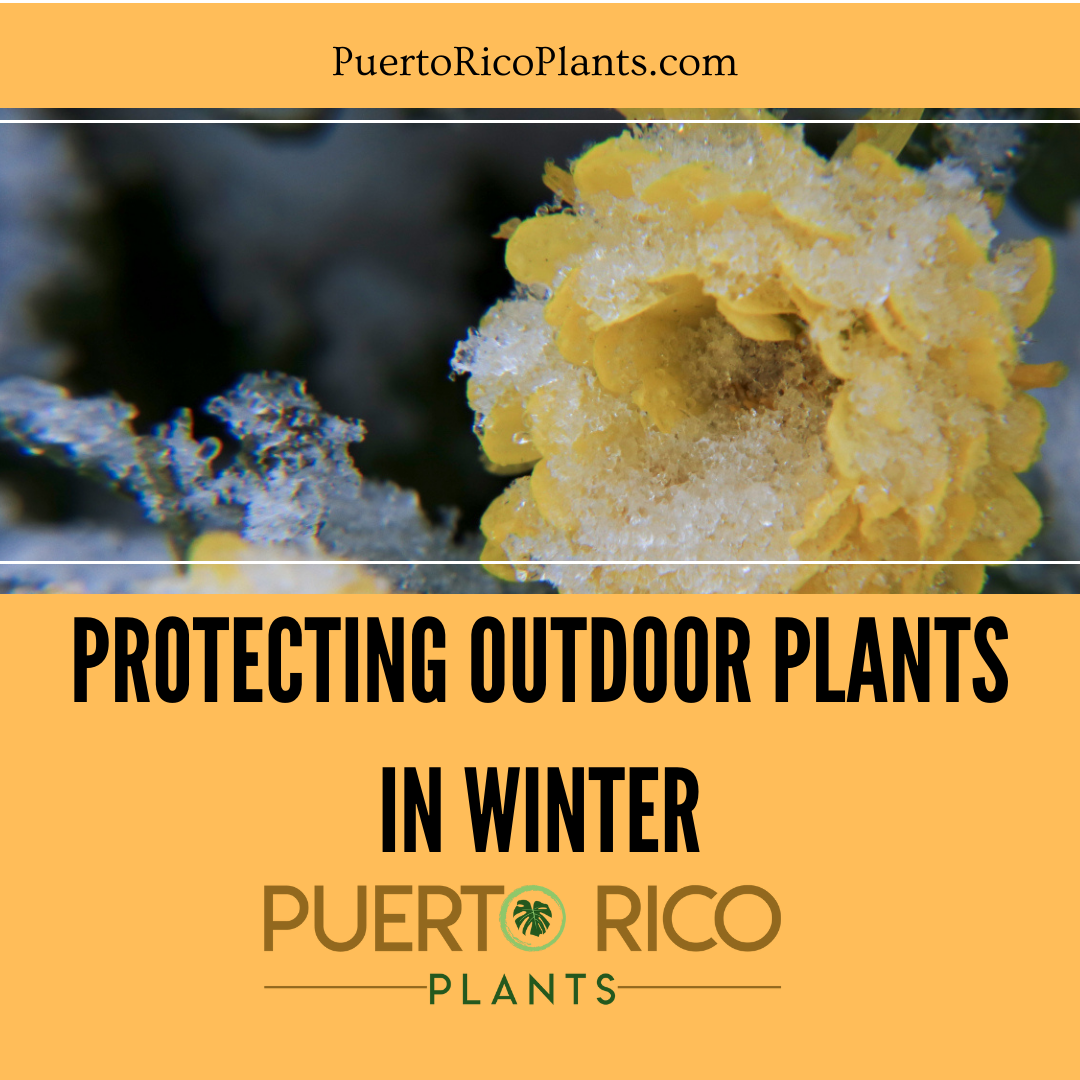Protecting Outdoor Plants in Winter
DATE : December 1, 2021 By : pr-plants
When plants freeze, the growth process is inhibited, and it can cause havoc on an otherwise healthy plant. As the months get colder, it’s important to give some thought to how to best protect your outdoor plants. No matter what region you live in, plants can need occasional or long-term shielding from the elements, and it’s important to know what steps to take to keep them safe. Once you read our tips on how to best get ready for the winter months, you’ll rest easy knowing that they’re secure until warmer weather returns.
1. Be generous with mulch.
Using organic materials to mulch flower beds and vulnerable roots serves a dual purpose. Not only will the 6-8 inches of mulch you add help to insulate plants, but it will also help replenish the soil with nutrients that may have been depleted by last year’s growing season. Even during warmer weather, mulch helps your plants retain the moisture they need to be healthy.
2. Shelter vulnerable plants.
Depending on where you live, sometimes it’s just not enough to simply cover plants outdoors. If it’s possible, you’ll need to move potted plants or plants that do not fare well in the cold into a more sheltered area. Ideally, they should be brought indoors, but moving them out of the elements can go a long way to making sure they survive the winter.
3. Add vertical insulation.
One of the easiest ways to protect your plants over the winter months is to create a wall of vertical insulation. By placing plant stakes around your plants and wrapping them in burlap, fleece, or landscaping material, you’ll create a barrier between them and the harsh elements. This method is perfect for an occasional freeze or for prolonged colder temperatures.
4.Water in advance of a freeze.
When you’re trying to protect your plants, it’s always a good idea to keep an eye on the forecast. Since frozen ground won’t allow water to reach your plants’ roots, you should always water them a few days before a freeze hits and before you cover them with an insulating blanket. Being adequately watered before frost hits helps to further reduce any cold-weather damage to plants.
5. Plant regionally appropriate plants.
While every region can experience less than ideal conditions for plants, planting according to a growing chart can increase your chances of maintaining a healthy garden. Being choosy about the plants you add to your space can ensure that they are growing in ideal conditions. It’s possible to winterize nearly any plant, but those that are meant for specific regions will always fare better.
You’ve invested a lot of time and money into your garden, and cold weather can severely impact your hard work. By mulching, watering appropriately, and protecting your plants from cold weather, you’ll be able to keep your investments safe. The duties of gardening don’t end when winter rears its head, but know that you know how to properly care for them, you’re certain to have healthy plants all year round.
Further Reading:


0 thoughts on “Protecting Outdoor Plants in Winter”